RBS 2012 Annual Report Download - page 142
Download and view the complete annual report
Please find page 142 of the 2012 RBS annual report below. You can navigate through the pages in the report by either clicking on the pages listed below, or by using the keyword search tool below to find specific information within the annual report.-
 1
1 -
 2
2 -
 3
3 -
 4
4 -
 5
5 -
 6
6 -
 7
7 -
 8
8 -
 9
9 -
 10
10 -
 11
11 -
 12
12 -
 13
13 -
 14
14 -
 15
15 -
 16
16 -
 17
17 -
 18
18 -
 19
19 -
 20
20 -
 21
21 -
 22
22 -
 23
23 -
 24
24 -
 25
25 -
 26
26 -
 27
27 -
 28
28 -
 29
29 -
 30
30 -
 31
31 -
 32
32 -
 33
33 -
 34
34 -
 35
35 -
 36
36 -
 37
37 -
 38
38 -
 39
39 -
 40
40 -
 41
41 -
 42
42 -
 43
43 -
 44
44 -
 45
45 -
 46
46 -
 47
47 -
 48
48 -
 49
49 -
 50
50 -
 51
51 -
 52
52 -
 53
53 -
 54
54 -
 55
55 -
 56
56 -
 57
57 -
 58
58 -
 59
59 -
 60
60 -
 61
61 -
 62
62 -
 63
63 -
 64
64 -
 65
65 -
 66
66 -
 67
67 -
 68
68 -
 69
69 -
 70
70 -
 71
71 -
 72
72 -
 73
73 -
 74
74 -
 75
75 -
 76
76 -
 77
77 -
 78
78 -
 79
79 -
 80
80 -
 81
81 -
 82
82 -
 83
83 -
 84
84 -
 85
85 -
 86
86 -
 87
87 -
 88
88 -
 89
89 -
 90
90 -
 91
91 -
 92
92 -
 93
93 -
 94
94 -
 95
95 -
 96
96 -
 97
97 -
 98
98 -
 99
99 -
 100
100 -
 101
101 -
 102
102 -
 103
103 -
 104
104 -
 105
105 -
 106
106 -
 107
107 -
 108
108 -
 109
109 -
 110
110 -
 111
111 -
 112
112 -
 113
113 -
 114
114 -
 115
115 -
 116
116 -
 117
117 -
 118
118 -
 119
119 -
 120
120 -
 121
121 -
 122
122 -
 123
123 -
 124
124 -
 125
125 -
 126
126 -
 127
127 -
 128
128 -
 129
129 -
 130
130 -
 131
131 -
 132
132 -
 133
133 -
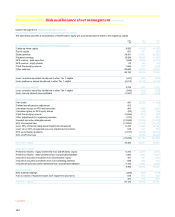 134
134 -
 135
135 -
 136
136 -
 137
137 -
 138
138 -
 139
139 -
 140
140 -
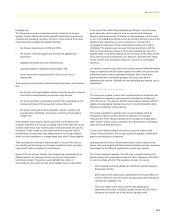 141
141 -
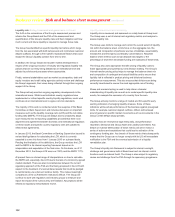 142
142 -
 143
143 -
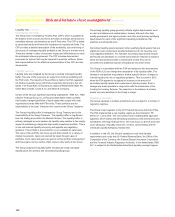 144
144 -
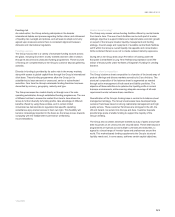 145
145 -
 146
146 -
 147
147 -
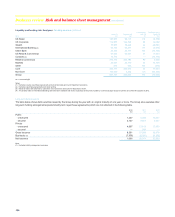 148
148 -
 149
149 -
 150
150 -
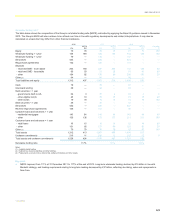 151
151 -
 152
152 -
 153
153 -
 154
154 -
 155
155 -
 156
156 -
 157
157 -
 158
158 -
 159
159 -
 160
160 -
 161
161 -
 162
162 -
 163
163 -
 164
164 -
 165
165 -
 166
166 -
 167
167 -
 168
168 -
 169
169 -
 170
170 -
 171
171 -
 172
172 -
 173
173 -
 174
174 -
 175
175 -
 176
176 -
 177
177 -
 178
178 -
 179
179 -
 180
180 -
 181
181 -
 182
182 -
 183
183 -
 184
184 -
 185
185 -
 186
186 -
 187
187 -
 188
188 -
 189
189 -
 190
190 -
 191
191 -
 192
192 -
 193
193 -
 194
194 -
 195
195 -
 196
196 -
 197
197 -
 198
198 -
 199
199 -
 200
200 -
 201
201 -
 202
202 -
 203
203 -
 204
204 -
 205
205 -
 206
206 -
 207
207 -
 208
208 -
 209
209 -
 210
210 -
 211
211 -
 212
212 -
 213
213 -
 214
214 -
 215
215 -
 216
216 -
 217
217 -
 218
218 -
 219
219 -
 220
220 -
 221
221 -
 222
222 -
 223
223 -
 224
224 -
 225
225 -
 226
226 -
 227
227 -
 228
228 -
 229
229 -
 230
230 -
 231
231 -
 232
232 -
 233
233 -
 234
234 -
 235
235 -
 236
236 -
 237
237 -
 238
238 -
 239
239 -
 240
240 -
 241
241 -
 242
242 -
 243
243 -
 244
244 -
 245
245 -
 246
246 -
 247
247 -
 248
248 -
 249
249 -
 250
250 -
 251
251 -
 252
252 -
 253
253 -
 254
254 -
 255
255 -
 256
256 -
 257
257 -
 258
258 -
 259
259 -
 260
260 -
 261
261 -
 262
262 -
 263
263 -
 264
264 -
 265
265 -
 266
266 -
 267
267 -
 268
268 -
 269
269 -
 270
270 -
 271
271 -
 272
272 -
 273
273 -
 274
274 -
 275
275 -
 276
276 -
 277
277 -
 278
278 -
 279
279 -
 280
280 -
 281
281 -
 282
282 -
 283
283 -
 284
284 -
 285
285 -
 286
286 -
 287
287 -
 288
288 -
 289
289 -
 290
290 -
 291
291 -
 292
292 -
 293
293 -
 294
294 -
 295
295 -
 296
296 -
 297
297 -
 298
298 -
 299
299 -
 300
300 -
 301
301 -
 302
302 -
 303
303 -
 304
304 -
 305
305 -
 306
306 -
 307
307 -
 308
308 -
 309
309 -
 310
310 -
 311
311 -
 312
312 -
 313
313 -
 314
314 -
 315
315 -
 316
316 -
 317
317 -
 318
318 -
 319
319 -
 320
320 -
 321
321 -
 322
322 -
 323
323 -
 324
324 -
 325
325 -
 326
326 -
 327
327 -
 328
328 -
 329
329 -
 330
330 -
 331
331 -
 332
332 -
 333
333 -
 334
334 -
 335
335 -
 336
336 -
 337
337 -
 338
338 -
 339
339 -
 340
340 -
 341
341 -
 342
342 -
 343
343 -
 344
344 -
 345
345 -
 346
346 -
 347
347 -
 348
348 -
 349
349 -
 350
350 -
 351
351 -
 352
352 -
 353
353 -
 354
354 -
 355
355 -
 356
356 -
 357
357 -
 358
358 -
 359
359 -
 360
360 -
 361
361 -
 362
362 -
 363
363 -
 364
364 -
 365
365 -
 366
366 -
 367
367 -
 368
368 -
 369
369 -
 370
370 -
 371
371 -
 372
372 -
 373
373 -
 374
374 -
 375
375 -
 376
376 -
 377
377 -
 378
378 -
 379
379 -
 380
380 -
 381
381 -
 382
382 -
 383
383 -
 384
384 -
 385
385 -
 386
386 -
 387
387 -
 388
388 -
 389
389 -
 390
390 -
 391
391 -
 392
392 -
 393
393 -
 394
394 -
 395
395 -
 396
396 -
 397
397 -
 398
398 -
 399
399 -
 400
400 -
 401
401 -
 402
402 -
 403
403 -
 404
404 -
 405
405 -
 406
406 -
 407
407 -
 408
408 -
 409
409 -
 410
410 -
 411
411 -
 412
412 -
 413
413 -
 414
414 -
 415
415 -
 416
416 -
 417
417 -
 418
418 -
 419
419 -
 420
420 -
 421
421 -
 422
422 -
 423
423 -
 424
424 -
 425
425 -
 426
426 -
 427
427 -
 428
428 -
 429
429 -
 430
430 -
 431
431 -
 432
432 -
 433
433 -
 434
434 -
 435
435 -
 436
436 -
 437
437 -
 438
438 -
 439
439 -
 440
440 -
 441
441 -
 442
442 -
 443
443 -
 444
444 -
 445
445 -
 446
446 -
 447
447 -
 448
448 -
 449
449 -
 450
450 -
 451
451 -
 452
452 -
 453
453 -
 454
454 -
 455
455 -
 456
456 -
 457
457 -
 458
458 -
 459
459 -
 460
460 -
 461
461 -
 462
462 -
 463
463 -
 464
464 -
 465
465 -
 466
466 -
 467
467 -
 468
468 -
 469
469 -
 470
470 -
 471
471 -
 472
472 -
 473
473 -
 474
474 -
 475
475 -
 476
476 -
 477
477 -
 478
478 -
 479
479 -
 480
480 -
 481
481 -
 482
482 -
 483
483 -
 484
484 -
 485
485 -
 486
486 -
 487
487 -
 488
488 -
 489
489 -
 490
490 -
 491
491 -
 492
492 -
 493
493 -
 494
494 -
 495
495 -
 496
496 -
 497
497 -
 498
498 -
 499
499 -
 500
500 -
 501
501 -
 502
502 -
 503
503 -
 504
504 -
 505
505 -
 506
506 -
 507
507 -
 508
508 -
 509
509 -
 510
510 -
 511
511 -
 512
512 -
 513
513 -
 514
514 -
 515
515 -
 516
516 -
 517
517 -
 518
518 -
 519
519 -
 520
520 -
 521
521 -
 522
522 -
 523
523 -
 524
524 -
 525
525 -
 526
526 -
 527
527 -
 528
528 -
 529
529 -
 530
530 -
 531
531 -
 532
532 -
 533
533 -
 534
534 -
 535
535 -
 536
536 -
 537
537 -
 538
538 -
 539
539 -
 540
540 -
 541
541 -
 542
542 -
 543
543
 |
 |

140
Business review Risk and balance sheet management continued
Liquidity risk: Policy, framework and governance continued
The ILAA is the cornerstone of the Group’s assessment process and
informs the Group Board and the FSA of the assessment and
quantification of the Group’s liquidity risks and their mitigation and how
much current and future liquidity is required to manage those risks.
The Group has identified ten specific liquidity risk factors which range
from the risk associated with both behavioural and contractual customer
deposit outflows, through to firm-specific reputational factors that could
impact the Group’s liquidity position from time to time.
In addition, the Group follows the broader market developments in
respect of the ongoing evolution of industry and regulatory liquidity risk
policies that are currently being debated at an international level and
adjusts its policies and processes where appropriate.
Finally, external stakeholders such as market counterparties, debt and
equity investors and credit rating agencies actively review and challenge
the Group’s approach, their views being reflected through their ongoing
support of the Group.
The Group actively monitors ongoing regulatory developments in the
international arena. Whilst most individual country regulators have
implemented or refined specific country liquidity regulations, much work
continues at an international level to agree common standards.
The majority of this work is conducted under the auspices of the Basel
Committee on Bank Supervision and includes discussion on important
measures such as the liquidity coverage ratio (LCR) and the net stable
funding ratio (NSFR). The Group will always look to proactively adopt
such measures into its reporting capabilities provided that there is an
alignment and agreement between domestic and international regulators
on these issues and specific country regulatory rules are updated to
reflect these agreements.
In January 2013, the Basel Committee on Banking Supervision issued its
revised draft guidance for calculating the LCR, which is currently
expected to come into force from 1 January 2015 on a phased basis.
Pending the finalisation of the definitions, the Group monitors the LCR
and the NSFR in its internal reporting framework based on its
interpretation and expectation of the final rules. On this basis, as of 31
December 2012, the Groups LCR was over 100% and the NSFR 117%.
At present there is a broad range of interpretations on how to calculate
the NSFR and, especially, the LCR due to the lack of a commonly agreed
market standard. There are also inconsistencies between the current
regulatory approach of the FSA and that being proposed in the LCR with
respect to the treatment of unencumbered assets that could be pledged
to central banks via a discount window facility. This makes meaningful
comparisons of the LCR between institutions difficult. The Group will
continue to work with regulators and industry groups to measure and
report the impact of the rules as they are finalised. Assumptions will be
refined as regulatory interpretations evolve.
Liquidity measurement and monitoring
Liquidity risk is measured and assessed on a daily basis at Group level.
The Group uses a set of internal and regulatory metrics and analysis to
assess liquidity risk.
The Group uses limits to manage and control the overall extent of liquidity
risk within the balance sheet. Limits focus on the aggregate risk, the
amount and composition of particular sources of liabilities, asset liability
mismatches and third party counterparty concentrations. Reported
balance sheet metrics such as loan:deposit ratio targets or the
percentage of short-term wholesale funding are examples of these limits.
The Group also uses appropriate transfer pricing of liquidity costs to
foster appropriate pricing behaviour and decision making. The Group’s
internal transfer pricing policy helps to manage the balance sheet mix
and composition of contingent and actual liabilities and to ensure that
liquidity risk is reflected in product pricing and divisional business
performance measurement. This also ensures that divisions are being
correctly incentivised to source the most appropriate mix of funding.
Stress and scenario testing is used to help inform a broader
understanding of liquidity risk as well as to model specific liquidity risks
events, for example the secession of a country from the euro.
The Group actively monitors a range of market and firm-specific early
warning indicators of emerging liquidity stresses. Some of these
indicators will be actual performance of the business against pre-agreed
limits, for example customer deposit outflows. Others will be based
around general or specific market movements such as movements in the
Group’s credit default swap spreads.
Liquidity risks are reviewed at legal entity daily, and performance
reported to Divisional and Group Asset and Liability Committees. Any
breach or material deterioration of these metrics will set in motion a
series of actions and escalations that could lead to activation of the
contingency funding plan. Any breach of these metrics that subsequently
means that the Group can no longer comply with its ILG will necessitate
notification to the FSA and the eventual submission of a liquidity
remediation plan.
The Group’s liquidity risk framework is subject to internal oversight,
challenge and governance both at Board level and via internal control
functions such as Internal Audit. The Group is also subject to regulatory
review and challenge from the FSA through its supervisory programme.
